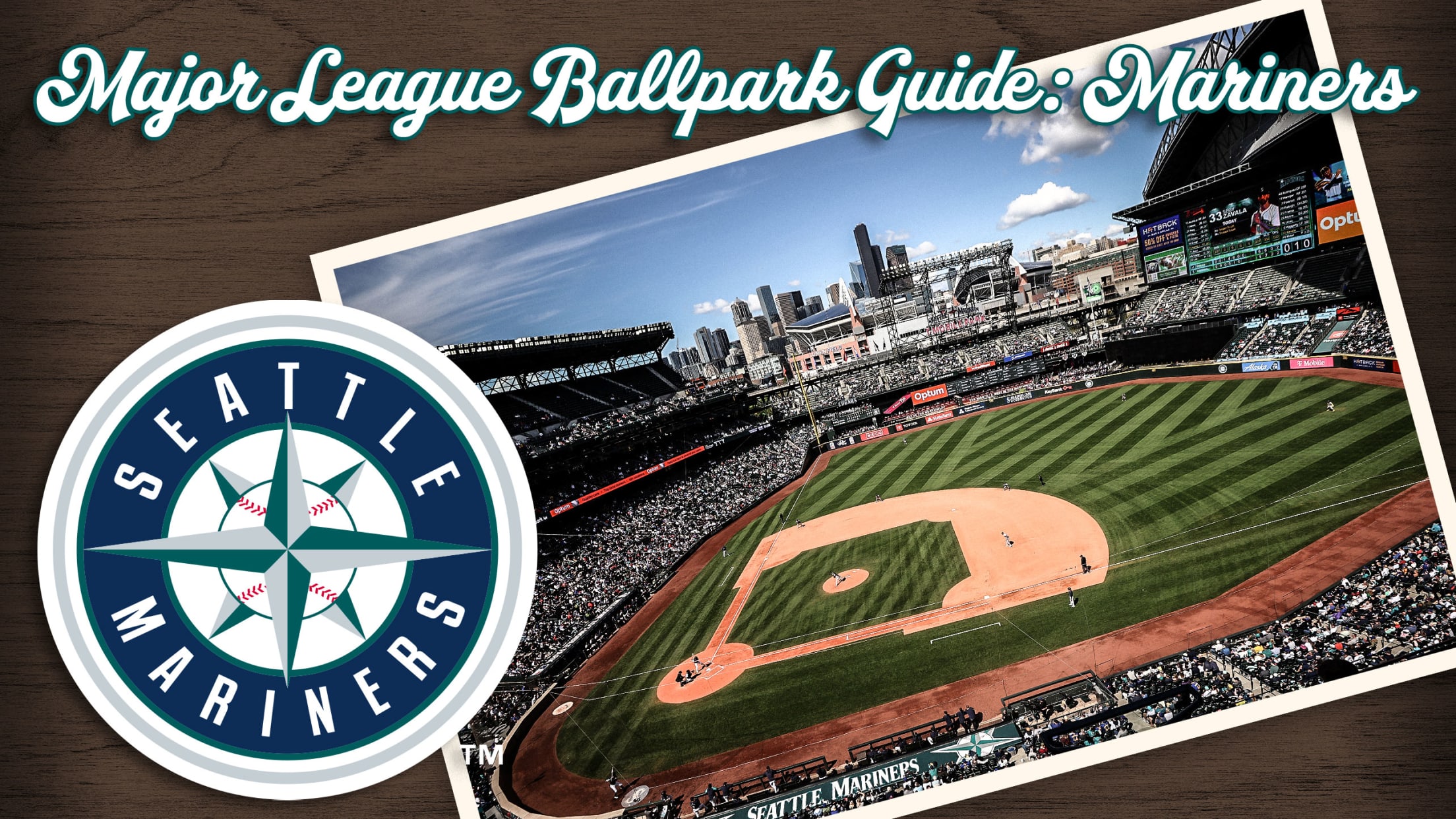
Explore T-Mobile Park, home of the Seattle Mariners

Baseball against the backdrop of one of the most beautiful summer regions in the country has made T-Mobile Park a top-tier coveted stop among the 30 ballparks across MLB.
Nestled in the SoDo neighborhood just south of downtown Seattle, the home of the Mariners opened in July of 1999. But the path of this venue, from planning to construction, is among the most fascinating sports stories in both the region and the sport itself.
Seattle Mariners
Established: 1977
American League West
Ballpark: T-Mobile Park (opened 1999)
T-Mobile Park replaced the Kingdome, the Mariners’ original home for 21 1/2 seasons. The Kingdome was an enclosed concrete structure that protected the playing surface from the region’s cold and rainy environment early in the season but also trapped it from beautiful summers. The facility had also weathered significant wear and tear by the early 1990s, to the point where players and the public expressed desire for a new stadium.
That need, coupled with declining attendance and the team’s on-field performance, created a legitimate concern that the Mariners might leave the city altogether. That’s what made the 1995 season even more special -- when the Mariners made a dramatic playoff push after languishing in last place in mid-July -- as it helped save baseball in Seattle by reinvigorating the region and rallying community support that eventually paved the way for T-Mobile Park.
The team's success that season drew fans back to the Kingdome, and attendance surged to sellouts in the postseason. The Mariners became a source of pride for the city, helping to foster a strong local identity around the team. That success led to increased political and financial backing for a new stadium, with the need for a modern, baseball-specific venue becoming clear, culminating in the construction of T-Mobile Park (which was originally called Safeco Field).
This new stadium has provided a sustainable home for the team and enhanced the fan experience.
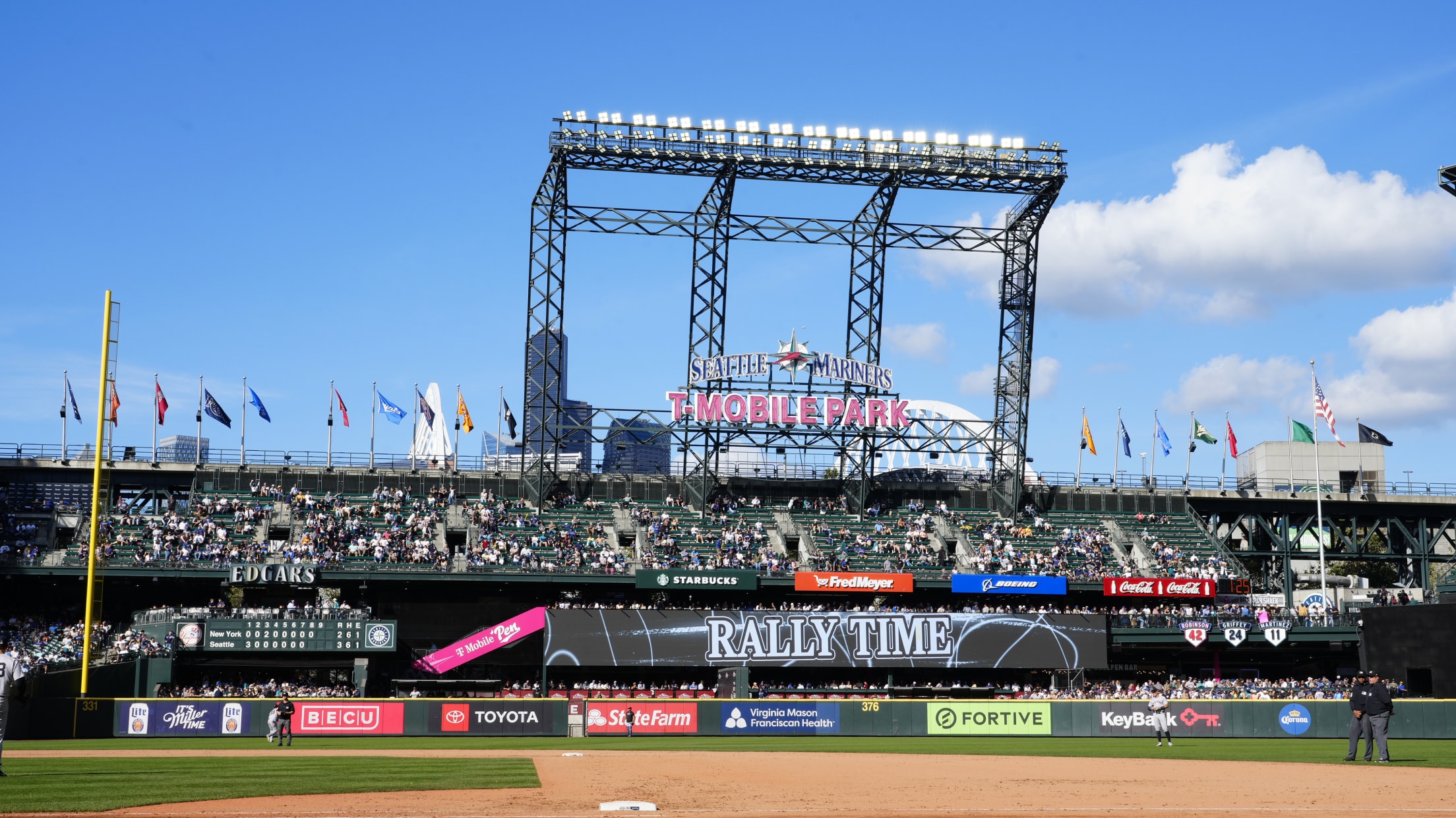
T-Mobile Park
T-Mobile Park location (via Google Maps)
Mariners' schedule
Mariners' roster
1250 1st Ave S
Seattle, WA 98134
Capacity: 47,943
Dimensions: left field, 331 feet; center field, 409 feet; right field, 327 feet
Park factors (2022-24)
100 = league average
Runs: 83 | Homers: 96 | Hits: 90
Unique Characteristics
The ballpark features a retro-style design with a brick exterior, concourse views of the field and, most unique of all, a retractable roof that essentially serves as a massive, metallic umbrella. Unlike other ballparks with retractable roofs, the Mariners’ only purpose is to protect against precipitation. So, even on the chilliest nights early and late in the season, the canopy-esque figure only impacts the temperature by a few degrees, and everyone still very much feels outside.
Those environmental factors also play a significant role in why it's MLB’s most pitcher-friendly park.
Seattle’s climate -- which is cool and damp, sometimes even into June -- affects the density of the air, leading to less buoyant conditions, and as such, fewer home runs and extra-base hits. Being at sea level also contributes to a denser air mass, creating what many hitters have referred to as the dreaded “Marine Layer.”
Statistics also support these assertions, as Statcast’s park factors metrics show that T-Mobile Park has yielded the least offensive output over a three-year rolling period.
All of these factors have shaped the strategies of teams and players who compete here -- especially the Mariners, who’ve built the blueprint of their roster on standout pitching.
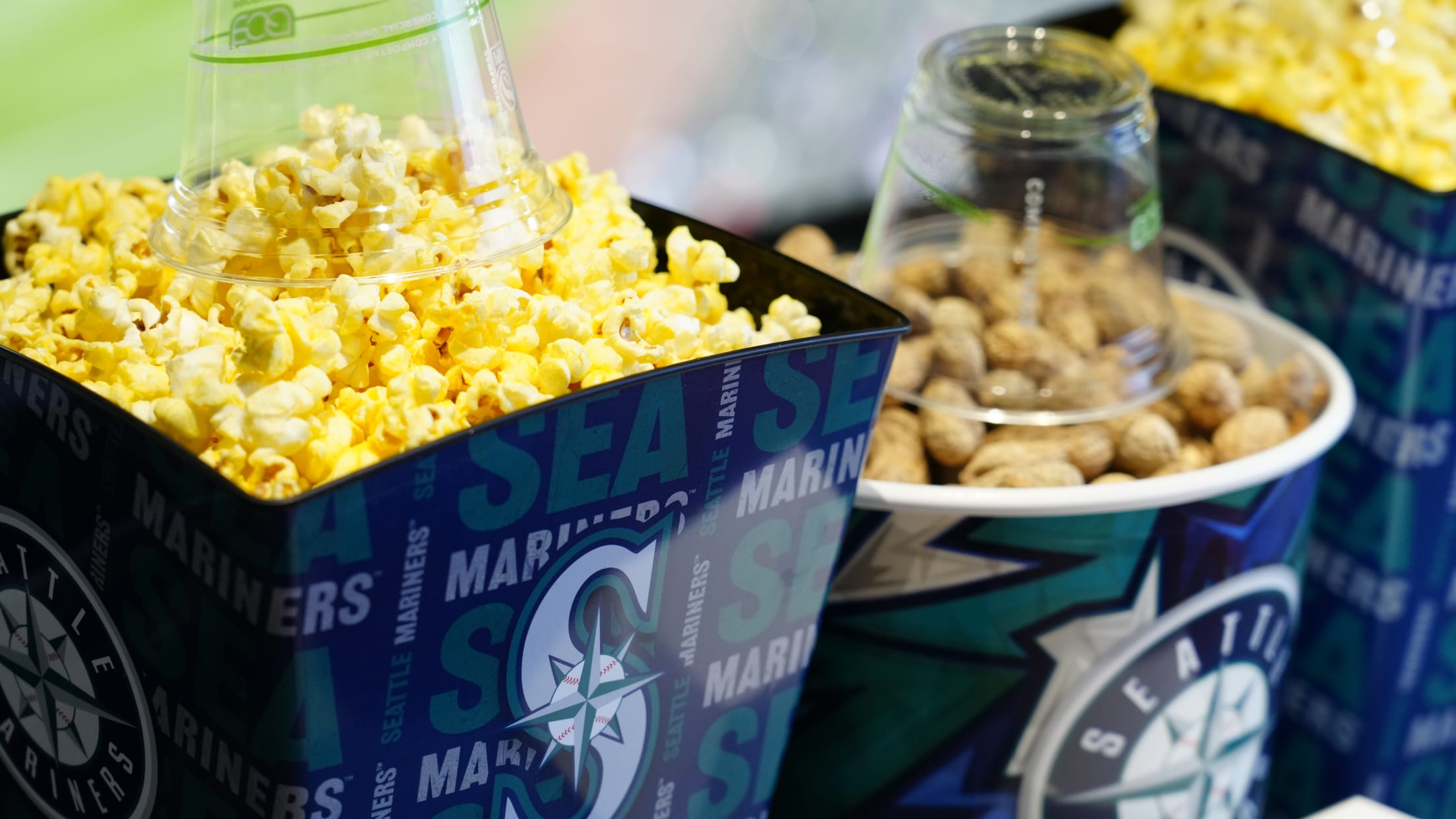
Concessions
This is another attribute to why T-Mobile Park stands taller than all other ballparks, as their in-stadium culinary scene is among the Majors’ most vibrant -- an effort that’s been spearheaded over the past decade or so.
Specifically, the club wanted to create a stronger local food presence at the ballpark to fulfill the desires of a fan base whose demographic seeks a unique ballpark experience that retains the fabric of Seattle’s ambitious local food scene.
Some of the favorites include:
• Tamari Bar (Sec. 133): The Seattle-based Japanese establishment was new to the ballpark in 2024, featuring dishes like Area 206 Curry Rice, Katsu Curry Rice, Curry Donuts Dip and French Ginger Ale.
• MOTO Pizza (Sec. 314): After a wildly successful first year bringing its self-described “Odd Pizza” to T-Mobile Park, Seattle-based MOTO Pizza is adding its popular Crab Pizza to the menu.
• The Walk-Off Market (Sec. 105, 126 & 141): Designed to eliminate lines and create a more effortless shopping experience, this has enhanced the gameday experience by providing a variety of delicious, high-quality food options in a vibrant setting.
• Salt & Straw (Sec. 183): One of Seattle’s most beloved local ice cream shops has a presence.
• Marination (T-Mobile ‘Pen & Sec. 119): Another Seattle staple, known for its delicious, Hawaiian-Korean fusion food.
• Edgar’s Cantina (T-Mobile ‘Pen & Sec. 212): Named after Hall of Famer Edgar Martinez, this Mexican-inspired restaurant offers great views into left field and the bullpens. It’s also where fans can try the Mariners’ Chapulines, the famous fried grasshoppers.
• Ballard Pizza (T-Mobile ‘Pen and Sections 132 & 241): A go-to spot for pizza lovers, offering a taste of one of Seattle’s favorite neighborhoods.
The club also offers the Mariners Value Menu -- available at sections 109, 118, 222, 244, 309, 319, 329 and 347 -- that offer multiple options of typical ballpark fare such as hot dogs and nachos, all under $5.
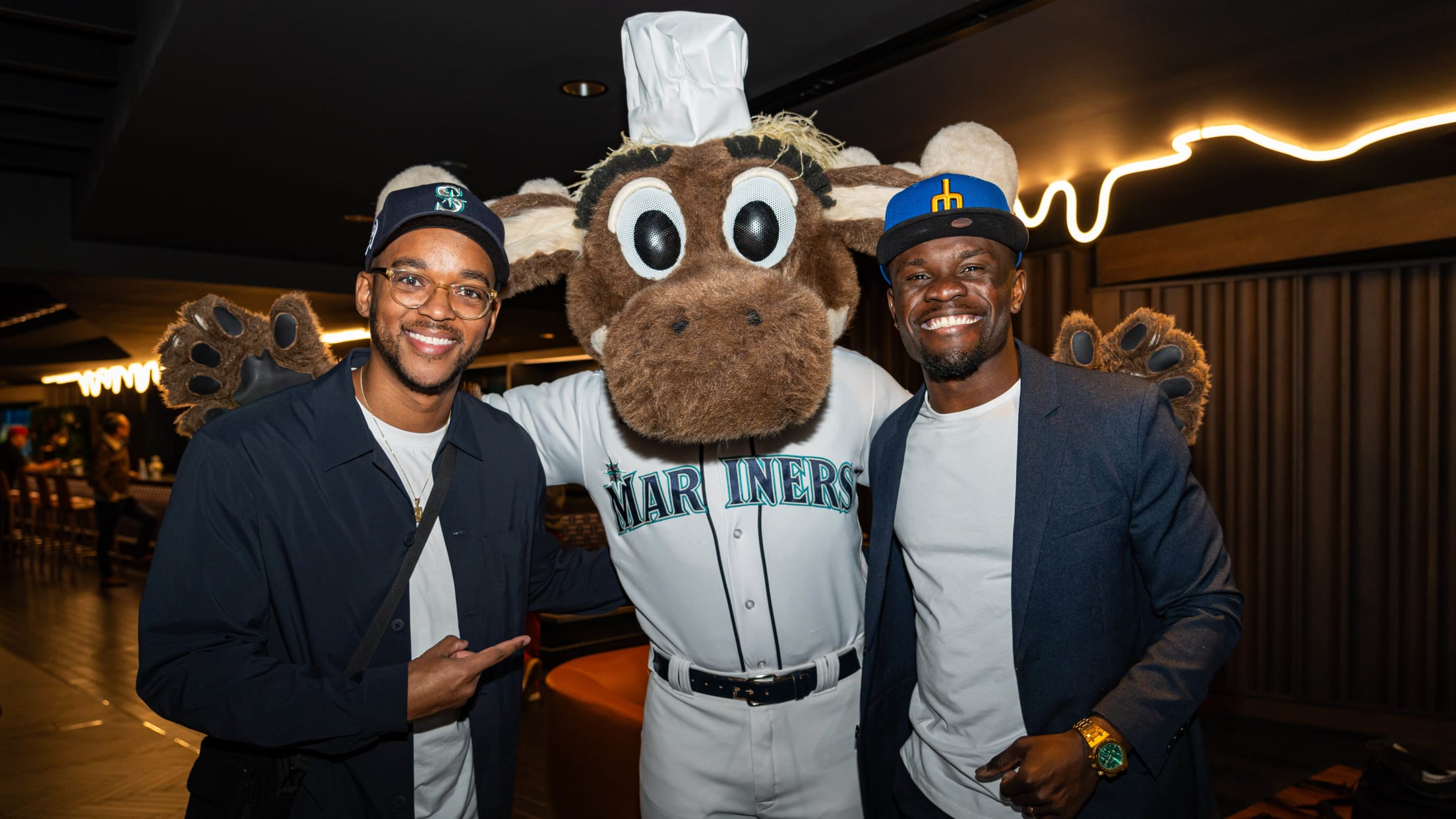
Mascot
Seattle has one of the more unusual mascots in the Majors, but the Mariner Moose is among the most beloved by fans. So, perhaps fittingly, its backstory is distinct and had significant fan involvement.
The year was 1990, and the Mariners were in search of a more substantive mascot that would enhance the club’s brand and increase fan engagement. Jeff Smulyan had just bought the team from George Argyros, and his staff was looking at various ways to be more aggressive promotionally. A mascot was looked at as an opportunity.
So, they opened the floor up to a contest for kids 14 and under in the Northwest to submit their ideas. More than 2,500 entries later, the club selected the idea presented by Ammon Spiller, a fifth grader from Central Elementary School in Ferndale, Wash. Other than the alliteration, there was no major connection between the Moose and the Mariners, the Pacific Northwest and the rest of the fanbase. But it somehow stuck, and it is now among the more recognizable mascots in sports.
Local attractions
Nestled in between two massive mountain ranges and along the shores of Puget Sound and Lake Washington, Seattle is objectively one of the country’s most scenic cities. The area also boasts a vibrant arts and music scene, diverse culinary influences leveraged by the region’s access to fresh seafood, produce and artisan products, and of course, a deep coffee culture as the birthplace of Starbucks.
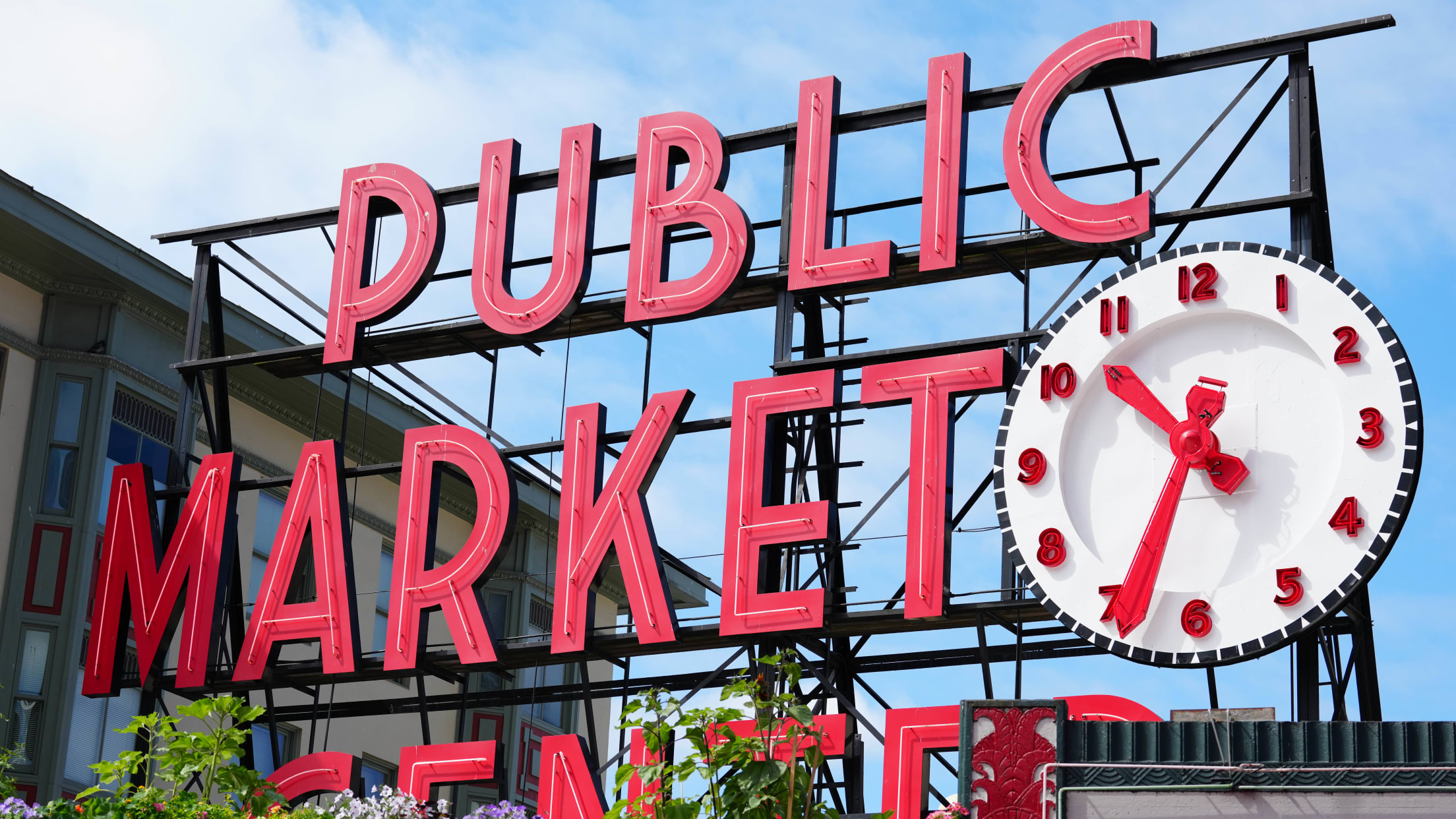
As for nearby attractions to the ballpark, the bustling Pike Place Market is a must-visit for its fresh produce, artisanal foods and the iconic fish-throwing vendors. Up the road is Seattle Center, where the Space Needle and its observation tower soar on its own in the Lower Queen Anne neighborhood, offering stunning views of the city and surrounding mountains. In that same complex, the Chihuly Garden and Glass Museum showcases stunning glasswork of Dale Chihuly, with both indoor and outdoor displays, and the Museum of Pop Culture (MoPOP) displays artifacts on contemporary pop culture, featuring exhibits on music, sci-fi, and more.
Getting further outside the city, Seattle is within a day trip to three National Parks: Olympic, Mount Rainier and North Cascades.
Food and drink
Seattle's food scene is renowned for several reasons, but it's perhaps most known for the seafood scene and its influences from the Asian community. A Seattle staple and must-visit is Din Tai Fung, a Taiwanese chain that has become a favorite for its delicious dumplings and noodle dishes. Closer to the ballpark, stop by Salumi, a beloved deli known for its artisanal cured meats and sandwiches, perfect for a quick and delicious lunch. At Pike Place Chowder, taste its award-winning chowder and other seafood soups. For a more modest meal, Yoshino Teriyaki in Capitol Hill packs a ton of flavor and authenticity to the area.
In Ballard, Seattle's beer scene is thriving, home to a vibrant community of craft breweries, offering a wide range of styles and flavors. Stoup Brewing, Bale Breaker & Yonder Cider and Obec Brewing are among the best and all a catty corner from each other. If wineries are your scene, a 30-minute trek to Woodinville, Wash., will lead you to many of the region’s best, including Chateau Ste. Michelle, which also hybrids as a concert venue in the summer.
Moving on
After stopping in the Emerald City to see the Mariners at T-Mobile Park, all kinds of nearby baseball options are available to continue your journey. Three hours north and beyond the border, Nat Bailey Stadium in Vancouver, British Columbia, is the only Minor League park in Canada. If you were to begin a lengthy road trip there, High-A Everett just north of Seattle is a strong second stop. After meandering through the Seattle-Tacoma area, hit the Hillsboro Hops outside of Portland, or the Eugene Emeralds down the road. Central Washington is home to the Tri-City Dust Devils, while the eastern part of the state hosts the Spokane Indians.